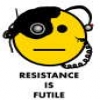Engine Break in Controversy settled
- TexasKZ
-
 Topic Author
Topic Author
- Offline
- Platinum Member
-

Registered
- Posts: 7954
- Thanks: 2522
Engine Break in Controversy settled
14 Nov 2018 05:36 - 16 Nov 2018 18:32
1982 KZ1000 LTD parts donor
1981 KZ1000 LTD awaiting resurrection
2000 ZRX1100 not ridden enough
www.kzrider.com/11-projects/620336-anoth...uild-thread?start=24
1981 KZ1000 LTD awaiting resurrection
2000 ZRX1100 not ridden enough
www.kzrider.com/11-projects/620336-anoth...uild-thread?start=24
Last edit: 16 Nov 2018 18:32 by KZQ.
The following user(s) said Thank You: daveo
Please Log in or Create an account to join the conversation.
- TexasKZ
-
 Topic Author
Topic Author
- Offline
- Platinum Member
-

Registered
- Posts: 7954
- Thanks: 2522
Re: Engine Break in Controversy settled
14 Nov 2018 05:38
This was snagged from ZRXOA
Engine 1, “By The Book Break-In”
Installed at 1,828 miles, removed at 2,861 miles
Break-In Notes: Ridden gently. Didn’t exceed 50% throttle or 5,000 rpm for the first 600 miles, and didn’t exceed 75% throttle or 7,000 rpm until 1,000 miles. Didn’t experience WOT until 1,000 miles was accumulated. Ridden with constantly varying engine speed and load, no easy task on a slow bike in a busy, urban environment! Oil and filter changed at 600 miles.
Piston OD: 2.9910” at install, 2.9910” after 1,000 miles
Cylinder ID: 2.9925” at install, 2.9930” after 1,000 miles
Top Ring End Gap: 0.0130” at install, 0.0145” after 1,000 miles
Compression: 235 psi hot after 1,000 miles
Leak Down: 4% hot after 1,000 miles
Engine 2, “Brutal Break-In”
Installed at 2,861 miles, removed at 3,890 miles
Break-In Notes: Went to WOT within moments of first starting up, and was ridden hard for 1,000 miles. Did everything we’re told not to—lots of throttle and high-speed droning at steady throttle. Oil and filter changed at 600 miles.
Piston OD: 2.9910” at install, 2.9910” after 1,000 miles
Cylinder ID: 2.9925” at install, 2.9930” after 1,000 miles
Top Ring End Gap: 0.0130” at install, 0.0150” after 1,000 miles
Compression: 235 psi hot after 1,000 miles
Leak Down: 4% hot after 1,000 miles
Engine 1, “By The Book Break-In”
Installed at 1,828 miles, removed at 2,861 miles
Break-In Notes: Ridden gently. Didn’t exceed 50% throttle or 5,000 rpm for the first 600 miles, and didn’t exceed 75% throttle or 7,000 rpm until 1,000 miles. Didn’t experience WOT until 1,000 miles was accumulated. Ridden with constantly varying engine speed and load, no easy task on a slow bike in a busy, urban environment! Oil and filter changed at 600 miles.
Piston OD: 2.9910” at install, 2.9910” after 1,000 miles
Cylinder ID: 2.9925” at install, 2.9930” after 1,000 miles
Top Ring End Gap: 0.0130” at install, 0.0145” after 1,000 miles
Compression: 235 psi hot after 1,000 miles
Leak Down: 4% hot after 1,000 miles
Engine 2, “Brutal Break-In”
Installed at 2,861 miles, removed at 3,890 miles
Break-In Notes: Went to WOT within moments of first starting up, and was ridden hard for 1,000 miles. Did everything we’re told not to—lots of throttle and high-speed droning at steady throttle. Oil and filter changed at 600 miles.
Piston OD: 2.9910” at install, 2.9910” after 1,000 miles
Cylinder ID: 2.9925” at install, 2.9930” after 1,000 miles
Top Ring End Gap: 0.0130” at install, 0.0150” after 1,000 miles
Compression: 235 psi hot after 1,000 miles
Leak Down: 4% hot after 1,000 miles
1982 KZ1000 LTD parts donor
1981 KZ1000 LTD awaiting resurrection
2000 ZRX1100 not ridden enough
www.kzrider.com/11-projects/620336-anoth...uild-thread?start=24
1981 KZ1000 LTD awaiting resurrection
2000 ZRX1100 not ridden enough
www.kzrider.com/11-projects/620336-anoth...uild-thread?start=24
The following user(s) said Thank You: Nessism, daveo
Please Log in or Create an account to join the conversation.
- Nessism
-
- Offline
- Sustaining Member
-

Registered
- Posts: 7765
- Thanks: 3153
Re: Engine Break in Controversy settled
14 Nov 2018 10:29
In the OEM automotive world where I worked for more than two decades the engines get assembled and then tested on the dyno with ZERO gentleness. Likewise, when the car hits the end of the assembly line it gets started up and ushered straight to the rollers where the test tech mashes the throttle to the floor and the vehicle is run up to something above 65mph several times. I chuckle a little when people suggest you must keep the throttle light and rpms low on a new engine. I'm of the belief that you can do more harm than good by treating the engine that way, especially if the bores are used and have some out of round and taper. Combustion pressure is your rings best friend.
Ed
Carb O-ring Kits : www.kzrider.com/forum/3-carburetor/61807...-o-ring-kits?start=0
www.kzrider.com/forum/faq-wiki/618026-new-owner-things-to-know
1981 KZ750E2
www.kzrider.com/forum/11-projects/604901...z750e-project-thread
Carb O-ring Kits : www.kzrider.com/forum/3-carburetor/61807...-o-ring-kits?start=0
www.kzrider.com/forum/faq-wiki/618026-new-owner-things-to-know
1981 KZ750E2
www.kzrider.com/forum/11-projects/604901...z750e-project-thread
The following user(s) said Thank You: scubaanders
Please Log in or Create an account to join the conversation.
- AtLarge
-
- Offline
- User
-

Registered
- Posts: 187
- Thanks: 21
Re: Engine Break in Controversy settled
15 Nov 2018 04:16Nessism wrote: In the OEM automotive world where I worked for more than two decades the engines get assembled and then tested on the dyno with ZERO gentleness. Likewise, when the car hits the end of the assembly line it gets started up and ushered straight to the rollers where the test tech mashes the throttle to the floor and the vehicle is run up to something above 65mph several times. I chuckle a little when people suggest you must keep the throttle light and rpms low on a new engine. I'm of the belief that you can do more harm than good by treating the engine that way, especially if the bores are used and have some out of round and taper. Combustion pressure is your rings best friend.
Good comparison and good comment. I have wondered how the automotive world differed with new motors. No mention of heat cycling or cool down.
1973 Honda CL70-K3
1975 Kawasaki 350 F9-C
1983 Kawasaki KZ750-K1
1994 BMW K1100RS
2008 Suzuki GSX1300-BKK8 #1120
1975 Kawasaki 350 F9-C
1983 Kawasaki KZ750-K1
1994 BMW K1100RS
2008 Suzuki GSX1300-BKK8 #1120
Please Log in or Create an account to join the conversation.
- slmjim+Z1BEBE
-

- Offline
- User
-

Registered
- Enjoy Life! IT HAS AN EXPIRATION DATE!
- Posts: 1365
- Thanks: 861
Re: Engine Break in Controversy settled
15 Nov 2018 18:43
"What's The Best Way To Break-In A New Engine ??
The Short Answer: Run it Hard !
Why ??
Nowadays, the piston ring seal is really what the break in process is all about. Contrary to popular belief, piston rings don't seal the combustion pressure by spring tension. Ring tension is necessary only to "scrape" the oil to prevent it from entering the combustion chamber.
If you think about it, the ring exerts maybe 5-10 lbs of spring tension against the cylinder wall ...
How can such a small amount of spring tension seal against thousands of
PSI (Pounds Per Square Inch) of combustion pressure ??
Of course it can't.
How Do Rings Seal Against Tremendous Combustion Pressure ??
From the actual gas pressure itself !! It passes over the top of the ring, and gets behind it to force it outward against the cylinder wall. The problem is that new rings are far from perfect and they must be worn in quite a bit in order to completely seal all the way around the bore. If the gas pressure is strong enough during the engine's first miles of operation (open that throttle !!!), then the entire ring will wear into the cylinder surface, to seal the combustion pressure as well as possible.
The Problem With "Easy Break-In" ...
The honed crosshatch pattern in the cylinder bore acts like a file to allow the rings to wear. The rings quickly wear down the "peaks" of this roughness, regardless of how hard the engine is run.
There's a very small window of opportunity to get the rings to seal really well ... the first 20 miles !!
If the rings aren't forced against the walls soon enough, they'll use up the roughness before they fully seat. Once that happens there is no solution but to re hone the cylinders, install new rings and start over again.
Fortunately, most new sportbike owners can't resist the urge to "open it up" once or twice, which is why more engines don't have this problem !!
An additional factor that you may not have realized, is that the person at the dealership who set up your bike probably blasted your brand new bike pretty hard on the "test run". So, without realizing it, that adrenaline crazed set - up mechanic actually did you a huge favor !!"
(excerpt from the MotoTuneUSA web site).
www.mototuneusa.com/break_in_secrets.htm
When we bought our 2009 Honda ST1300A as a new leftover in 2012, I was confronted with the same question: how to best break it in. The question was complicated by the fact that we bought it from an out-of-town dealer in Murfreesboro, AR - almost 700 miles from home. Our plan was to 2-up from home to Murfreesboro on Z1BEBE's '93 CB750 Nighthawk (HerHawk), then we would make a Ridin' vacation from there back home, her on HerHawk and me on the ST.
I found the technique described in the link above above and decided to try it.
To make a long story short, I took delivery from the dealer, rode it for 50 miles, periodically accelerating WFO and decelerating on closed throttle as described in the link above, always staying 3K or so below the 9K redline. I did that pretty frequently for the first 25 mi. or so, somewhat less frequently for the remainder of the ride.
After running a fairly aggressive break-in like that for just over 50 mi., I returned to the dealer & had them change the oil and filter.
The next morning we left Murfreesboro and proceeded to have a great three day ride through the outstanding AR backroads of the Ouichita Mts., the Ozark Mts., and into southern MO before crossing into IL then IN and, finally home to KY.
First thing I did after saying HI to the dogs was drain the oil. I let it sit draining overnight, then changed the filter the next day.
I've run either Rotella dino or syn oil in it for the last 25,000+ mi. No oil consumption is noticeable and the bike seems to run just fine. When I checked the valves at 20,000 mi. I saw no apparent wear or debris of any sort. Plugs replaced at 20,000 mi. looked perfect.
This break-in technique is not unlike the aggressive style mentioned in the video. From my sample size of one I must say it's a successful technique.
I also used the same technique on the fresh motor of our of our once-basket-case '73 Z1, the one we lovingly refer to as "The Seven Year _itch". It too, runs just fine.
Good Ridin'
slmjim & Z1BEBE
The Short Answer: Run it Hard !
Why ??
Nowadays, the piston ring seal is really what the break in process is all about. Contrary to popular belief, piston rings don't seal the combustion pressure by spring tension. Ring tension is necessary only to "scrape" the oil to prevent it from entering the combustion chamber.
If you think about it, the ring exerts maybe 5-10 lbs of spring tension against the cylinder wall ...
How can such a small amount of spring tension seal against thousands of
PSI (Pounds Per Square Inch) of combustion pressure ??
Of course it can't.
How Do Rings Seal Against Tremendous Combustion Pressure ??
From the actual gas pressure itself !! It passes over the top of the ring, and gets behind it to force it outward against the cylinder wall. The problem is that new rings are far from perfect and they must be worn in quite a bit in order to completely seal all the way around the bore. If the gas pressure is strong enough during the engine's first miles of operation (open that throttle !!!), then the entire ring will wear into the cylinder surface, to seal the combustion pressure as well as possible.
The Problem With "Easy Break-In" ...
The honed crosshatch pattern in the cylinder bore acts like a file to allow the rings to wear. The rings quickly wear down the "peaks" of this roughness, regardless of how hard the engine is run.
There's a very small window of opportunity to get the rings to seal really well ... the first 20 miles !!
If the rings aren't forced against the walls soon enough, they'll use up the roughness before they fully seat. Once that happens there is no solution but to re hone the cylinders, install new rings and start over again.
Fortunately, most new sportbike owners can't resist the urge to "open it up" once or twice, which is why more engines don't have this problem !!
An additional factor that you may not have realized, is that the person at the dealership who set up your bike probably blasted your brand new bike pretty hard on the "test run". So, without realizing it, that adrenaline crazed set - up mechanic actually did you a huge favor !!"
(excerpt from the MotoTuneUSA web site).
www.mototuneusa.com/break_in_secrets.htm
When we bought our 2009 Honda ST1300A as a new leftover in 2012, I was confronted with the same question: how to best break it in. The question was complicated by the fact that we bought it from an out-of-town dealer in Murfreesboro, AR - almost 700 miles from home. Our plan was to 2-up from home to Murfreesboro on Z1BEBE's '93 CB750 Nighthawk (HerHawk), then we would make a Ridin' vacation from there back home, her on HerHawk and me on the ST.
I found the technique described in the link above above and decided to try it.
To make a long story short, I took delivery from the dealer, rode it for 50 miles, periodically accelerating WFO and decelerating on closed throttle as described in the link above, always staying 3K or so below the 9K redline. I did that pretty frequently for the first 25 mi. or so, somewhat less frequently for the remainder of the ride.
After running a fairly aggressive break-in like that for just over 50 mi., I returned to the dealer & had them change the oil and filter.
The next morning we left Murfreesboro and proceeded to have a great three day ride through the outstanding AR backroads of the Ouichita Mts., the Ozark Mts., and into southern MO before crossing into IL then IN and, finally home to KY.
First thing I did after saying HI to the dogs was drain the oil. I let it sit draining overnight, then changed the filter the next day.
I've run either Rotella dino or syn oil in it for the last 25,000+ mi. No oil consumption is noticeable and the bike seems to run just fine. When I checked the valves at 20,000 mi. I saw no apparent wear or debris of any sort. Plugs replaced at 20,000 mi. looked perfect.
This break-in technique is not unlike the aggressive style mentioned in the video. From my sample size of one I must say it's a successful technique.
I also used the same technique on the fresh motor of our of our once-basket-case '73 Z1, the one we lovingly refer to as "The Seven Year _itch". It too, runs just fine.
Good Ridin'
slmjim & Z1BEBE
A biker looks at your engine and chrome.
A Rider looks at your odometer and tags.
1973 ('72 builds) Z1 x2
1974 Z1-A x2
1975 Z1-B x2
1993 CB 750 Nighthawk x2
2009 ST1300A
www.kawasaki-z-classik.com
A Forum tightly focused on all things Z1 and Z2.
A Rider looks at your odometer and tags.
1973 ('72 builds) Z1 x2
1974 Z1-A x2
1975 Z1-B x2
1993 CB 750 Nighthawk x2
2009 ST1300A
www.kawasaki-z-classik.com
A Forum tightly focused on all things Z1 and Z2.
Please Log in or Create an account to join the conversation.
- old_kaw
-

- Offline
- User
-

Registered
- Posts: 929
- Thanks: 270
Re: Engine Break in Controversy settled
17 Nov 2018 10:59 - 17 Nov 2018 11:33
After glancing over some of the replies, it would seem that my taking my bike out and running the crap out of it with new rings last year actually helped the new NPR rings to seat. I broke it in the same way I ride it, hard at high rpm's. Of course it did get some time at low rpm while all of the checking, tightening and tuning went on, and then I set the valves after the initial run period, before the :woohoo: ride. 
BTW, that is copper anti-seize on the threads. Not so sure if that was a wise choice, when I feel that oil might have worked better there.
BTW, that is copper anti-seize on the threads. Not so sure if that was a wise choice, when I feel that oil might have worked better there.
1981 Kawasaki Kz1000K1
Located in the Saint Louis, Missouri Area.
Located in the Saint Louis, Missouri Area.
Attachments:
Last edit: 17 Nov 2018 11:33 by old_kaw. Reason: typo's
Please Log in or Create an account to join the conversation.
Moderators: Street Fighter LTD
